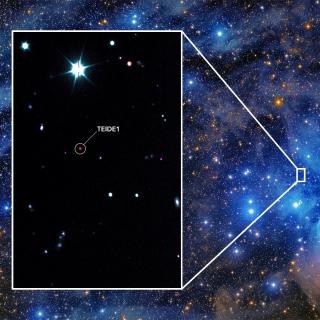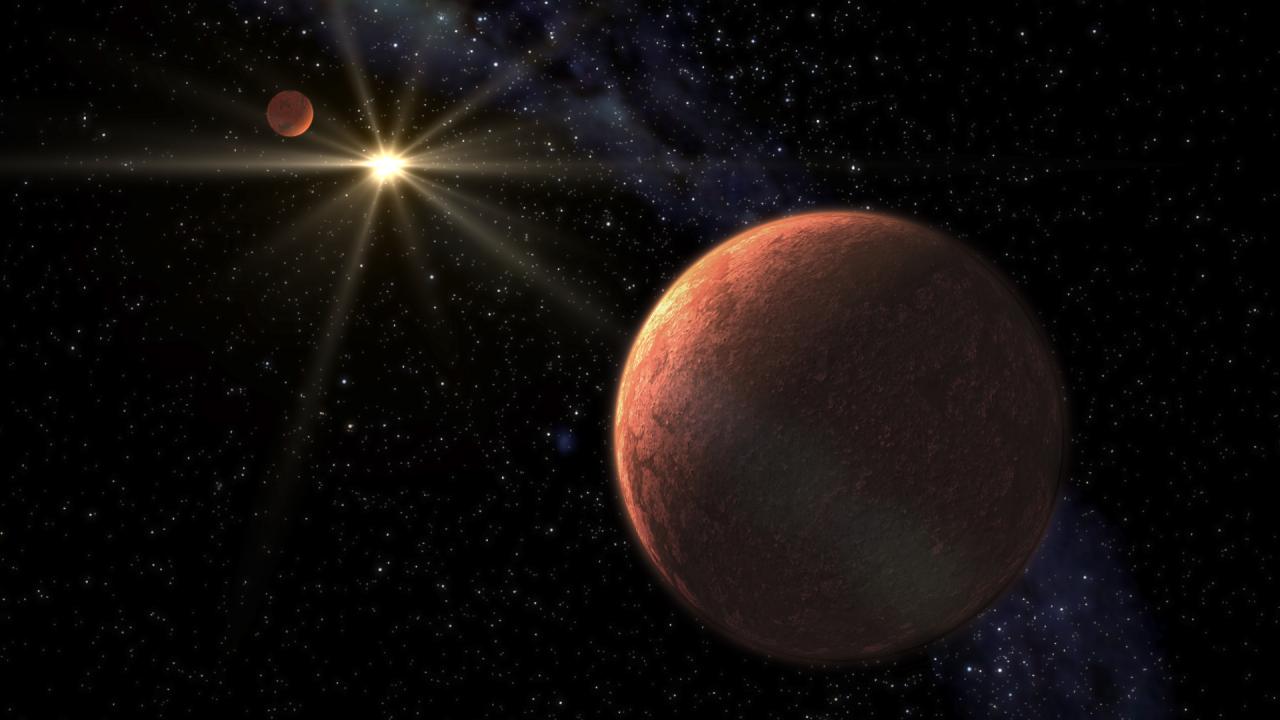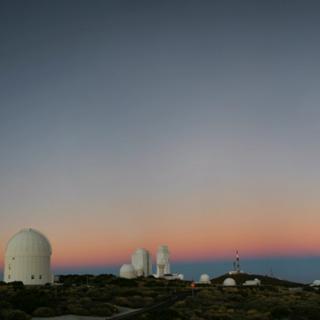General
Our goal is to study the processes that lead to the formation of low mass stars, brown dwarfs and planets and to characterize the physical properties of these objects in various evolutionary stages. Low mass stars and brown dwarfs are likely the most numerous type of objects in our Galaxy but due to their low intrinsic luminosity they are not so well known. We aim to study the frequency, multiplicity and spatial distribution of these objects in the solar neighbourhood and in nearby star forming regions and stellar clusters in order to better understand the mechanism of formation, characterise their optical and infrared properties and establish the relation between spectral properties, mass and luminosity.. Most of our effort will be dedicated to push toward lower mass limits the detection of these astros either bounded to stars and brown dwarfs and/or free-floating in interstellar space. The lowest mass objects display a lower intrinsic luminosity and cooler effective temperatures thus they are remarkably difficult to detect using direct imaging techniques. However, these techniques allow a full photometric and spectroscopic characterization and a best determination of their physical and chemical properties. We also aim to investigate the presence of planets around low mass stars using radial velocity measurements and techniques for high spatial resolution imaging. We will develop ultrastable spectrographs for large telescopes and systems for ultrafast imaging. With the spectrographs it would be possible to detect planets of similar mass to the Earth around G, K and M-type stars. The goal is to establish the frequency of these planets in stars of the solar neighbourhood and characterise the properties of the associated planetary systems.
Members
Results
- The optical and near-infrared sequence of 10 Myr-old L dwarfs in the nearest OB association to the Sun, Upper Scorpius
- The lithium depletion boundary of the Hyades cluster.
Scientific activity
Related publications
-
Planetary system around LTT 1445A unveiled by ESPRESSO: Multiple planets in a triple M-dwarf system
We present radial velocity follow-up obtained with ESPRESSO of the M-type star LTT 1445A (TOI-455), for which a transiting planet b with an orbital period of 5.4 days was detected by TESS. We report the discovery of a second transiting planet (LTT 1445A c) and a third non-transiting candidate planet (LTT 1445A d) with orbital periods of 3.12 and 24
Lavie, B. et al.Advertised on:
52023 -
Dynamical masses of two young transiting sub-Neptunes orbiting HD 63433
Context. Although the number of exoplanets reported in the literature exceeds 5000 so far, only a few dozen of them are young planets (≤900 Myr). However, a complete characterization of these young planets is key to understanding the current properties of the entire population. Hence, it is necessary to constrain the planetary formation processes
Zechmeister, M. et al.Advertised on:
32023 -
The CARMENES search for exoplanets around M dwarfs. A long-period planet around GJ 1151 measured with CARMENES and HARPS-N data
Context. Detecting a planetary companion in a short-period orbit through radio emission from the interaction with its host star is a new prospect in exoplanet science. Recently, a tantalising signal was found close to the low-mass stellar system GJ 1151 using LOFAR observations. Aims: We studied spectroscopic time-series data of GJ 1151 in order to
Blanco-Pozo, J. et al.Advertised on:
32023 -
Search for planets around stars with wide brown dwarfs
Aims: This work aims to better understand the role of wide brown dwarf companions in planetary systems. Methods: We obtained high-resolution spectra of six bright stars with co-moving wide substellar companions with the high-resolution SONG, CARMENES, and STELLA spectrographs. We used these spectra to derive radial velocities together with a
Šubjak, J. et al.Advertised on:
32023 -
The CARMENES search for exoplanets around M dwarfs. Guaranteed time observations Data Release 1 (2016-2020)
Context. The CARMENES instrument, installed at the 3.5 m telescope of the Calar Alto Observatory in Almería, Spain, was conceived to deliver high-accuracy radial velocity (RV) measurements with long-term stability to search for temperate rocky planets around a sample of nearby cool stars. Moreover, the broad wavelength coverage was designed to
Ribas, I. et al.Advertised on:
22023 -
The CARMENES search for exoplanets around M dwarfs. Variability on long timescales as seen in chromospheric indicators
It is clearly established that the Sun has an 11-yr cycle that is caused by its internal magnetic field. Such a cycle is also observed in a sample of M dwarfs. In the framework of exoplanet detection or atmospheric characterisation of exoplanets, the activity status of the host star plays a crucial role, and inactive states are preferable for such
Fuhrmeister, B. et al.Advertised on:
22023 -
The CARMENES search for exoplanets around M dwarfs. Wolf 1069 b: Earth-mass planet in the habitable zone of a nearby, very low-mass star
We present the discovery of an Earth-mass planet (M b sin i = 1.26 ± 0.21 M ⊕) on a 15.6 d orbit of a relatively nearby (d ~ 9.6 pc) and low-mass (0.167 ± 0.011 M ⊙) M5.0 V star, Wolf 1069. Sitting at a separation of 0.0672 ± 0.0014 au away from the host star puts Wolf 1069 b in the habitable zone (HZ), receiving an incident flux of S = 0.652 ± 0
Kossakowski, D. et al.Advertised on:
22023 -
Two temperate Earth-mass planets orbiting the nearby star GJ 1002
We report the discovery and characterisation of two Earth-mass planets orbiting in the habitable zone of the nearby M-dwarf GJ 1002 based on the analysis of the radial-velocity (RV) time series from the ESPRESSO and CARMENES spectrographs. The host star is the quiet M5.5 V star GJ 1002 (relatively faint in the optical, V ~ 13.8 mag, but brighter in
Suárez Mascareño, A. et al.Advertised on:
22023 -
Lower-than-expected flare temperatures for TRAPPIST-1
Aims: Stellar flares emit thermal and nonthermal radiation in the X-ray and ultraviolet (UV) regime. Although high energetic radiation from flares is a potential threat to exoplanet atmospheres and may lead to surface sterilization, it might also provide the extra energy for low-mass stars needed to trigger and sustain prebiotic chemistry. Despite
Maas, A. J. et al.Advertised on:
122022 -
A quarter century of spectroscopic monitoring of the nearby M dwarf Gl 514. A super-Earth on an eccentric orbit moving in and out of the habitable zone
Context. Statistical analyses based on Kepler data show that most of the early-type M dwarfs host multi-planet systems consisting of Earth- to sub-Neptune-sized planets with orbital periods of up to ~250 days, and that at least one such planet is likely located within the habitable zone. M dwarfs are therefore primary targets to search for
Damasso, M. et al.Advertised on:
102022 -
TOI-1468: A system of two transiting planets, a super-Earth and a mini-Neptune, on opposite sides of the radius valley
We report the discovery and characterization of two small transiting planets orbiting the bright M3.0V star TOI-1468 (LSPM J0106+1913), whose transit signals were detected in the photometric time series in three sectors of the TESS mission. We confirm the planetary nature of both of them using precise radial velocity measurements from the CARMENES
Chaturvedi, P. et al.Advertised on:
102022 -
The CARMENES search for exoplanets around M dwarfs. Stable radial-velocity variations at the rotation period of AD Leonis: A test case study of current limitations to treating stellar activity
Context. A challenge with radial-velocity (RV) data is disentangling the origin of signals either due to a planetary companion or to stellar activity. In fact, the existence of a planetary companion has been proposed, as well as contested, around the relatively bright, nearby M3.0 V star AD Leo at the same period as the stellar rotation of 2.23
Kossakowski, D. et al.Advertised on:
102022 -
SPECULOOS Northern Observatory: Searching for Red Worlds in the Northern Skies
SPECULOOS is a ground-based transit survey consisting of six identical 1 m robotic telescopes. The immediate goal of the project is to detect temperate terrestrial planets transiting nearby ultracool dwarfs (late M-dwarf stars and brown dwarfs), which could be amenable for atmospheric research with the next generation of telescopes. Here, we report
Burdanov, Artem Y. et al.Advertised on:
102022 -
A detailed analysis of the Gl 486 planetary system
Context. The Gl 486 system consists of a very nearby, relatively bright, weakly active M3.5 V star at just 8 pc with a warm transiting rocky planet of about 1.3 R ⊕ and 3.0 M ⊕. It is ideal for both transmission and emission spectroscopy and for testing interior models of telluric planets. Aims: To prepare for future studies, we aim to thoroughly
Caballero, J. A. et al.Advertised on:
92022 -
The HD 260655 system: Two rocky worlds transiting a bright M dwarf at 10 pc
We report the discovery of a multiplanetary system transiting the M0 V dwarf HD 260655 (GJ 239, TOI-4599). The system consists of at least two transiting planets, namely HD 260655 b, with a period of 2.77 d, a radius of R b = 1.240 ± 0.023 R ⊕, a mass of M b = 2.14 ± 0.34 M ⊕, and a bulk density of ρ b = 6.2 ± 1.0 g cm −3, and HD 260655 c, with a
Luque, R. et al.Advertised on:
82022 -
The CARMENES search for exoplanets around M dwarfs. Rotational variation in activity indicators of Ross 318, YZ CMi, TYC 3529-1437-1, and EV Lac
Context. The Calar Alto high-Resolution search for M dwarfs with Exo-earths with Near-infrared and optical Échelle Spectrographs (CARMENES) instrument is searching for periodic radial-velocity (RV) variations of M dwarfs, which are induced by orbiting planets. However, there are other potential sources of such variations, including rotational
Schöfer, P. et al.Advertised on:
72022 -
The CARMENES search for exoplanets around M dwarfs. Benchmarking the impact of activity in high-precision radial velocity measurements
Context. Current exoplanet surveys using the radial velocity (RV) technique are targeting M dwarfs because any habitable zone terrestrial-mass planets will induce a high RV and orbit on shorter periods than for more massive stars. One of the main caveats is that M dwarfs show a wide range of activity levels from inactive to very active, which can
Jeffers, S. V. et al.Advertised on:
72022 -
The CARMENES search for exoplanets around M dwarfs. Two Saturn-mass planets orbiting active stars
The CARMENES radial-velocity survey is currently searching for planets in a sample of 387 M dwarfs. Here we report on two Saturn-mass planets orbiting TYC 2187-512-1 (M * = 0.50 M ⊙) and TZ Ari (M * = 0.15 M ⊙), respectively. We obtained supplementary photometric time series, which we use along with spectroscopic information to determine the
Quirrenbach, A. et al.Advertised on:
72022 -
Magnetism, rotation, and nonthermal emission in cool stars. Average magnetic field measurements in 292 M dwarfs
Stellar dynamos generate magnetic fields that are of fundamental importance to the variability and evolution of Sun-like and low-mass stars, and for the development of their planetary systems. As a key to understanding stellar dynamos, empirical relations between stellar parameters and magnetic fields are required for comparison to ab initio
Reiners, A. et al.Advertised on:
62022 -
A study of flares in the ultra-cool regime from SPECULOOS-South
We present a study of photometric flares on 154 low-mass (≤0.2 M ⊙) objects observed by the SPECULOOS-South Observatory from 2018 June 1 to 2020 March 23. In this sample, we identify 85 flaring objects, ranging in spectral type from M4 to L0. We detect 234 flares in this sample, with energies between 10 29.2 and 10 32.7 erg, using both automated
Murray, C. A. et al.Advertised on:
62022
Related talks
No related talks were found.Related conferences
No related conferences were found.News
-
 25th anniversary of the discovery of the first brown dwarfAdvertised on
25th anniversary of the discovery of the first brown dwarfAdvertised on


